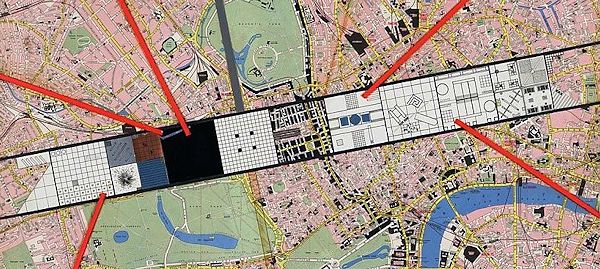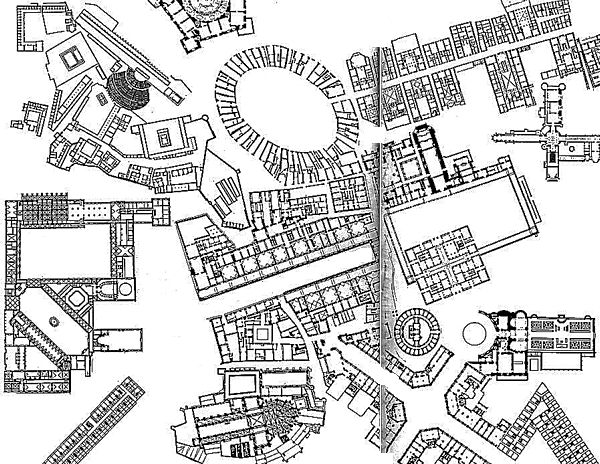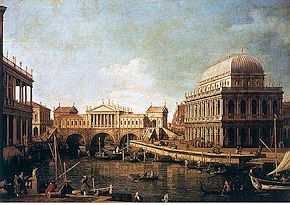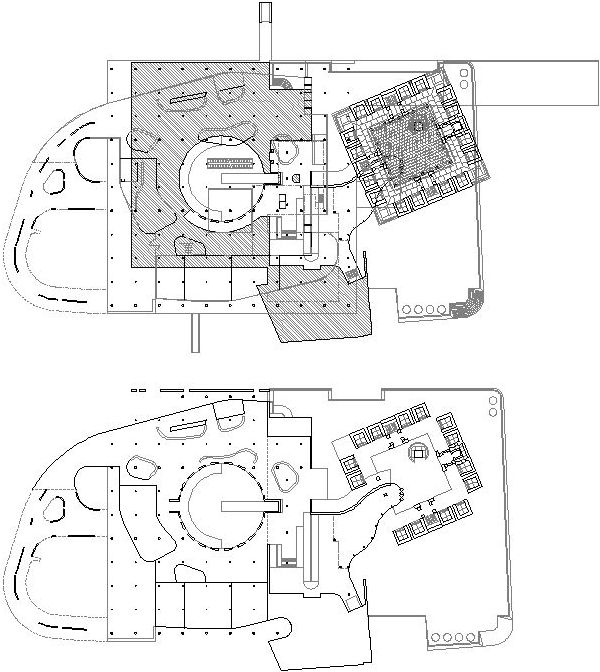Exodus, or the Voluntary Prisoners of Architecture
This study describes the steps that will have to be taken to establish an architectural oasis in the behavioral sink of London.
Suddenly, a strip of intense metropolitan desirability runs through the center of London. This strip is like a runway, a landing strip for the new architecture of collective monuments. Two walls enclose and protect this zone to retain its integrity and to prevent any contamination of its surface by the cancerous organism that threatens to engulf it.
Soon, the first inmates beg for admission. Their number rapidly swells into an unstoppable flow.
We witness the Exodus of London.
The physical structure of the old town will not be able to stand the continuing competition of this new architectural presence. London as we know it will become a pack of ruins.

Rem Koolhaas, Madelon Vreisendorp, Elia Zenghelis, Zoe Zenghelis, 1971.
2012.11.06 13:24
atemporality at work?
The only architectural collage actually in the book Collage City is the frontispiece:

David Griffin and Hans Kolhoff, City of composite presence (1978).
| |
2013.01.27 10:01
DEconstructivism and Baroque..
As to...
"However, baroque was obviously much more successfully extensive in domain and in its reign. I think deconstructivism came at a time when we had a very retrospective idea of forcing the "zeitgeist" upon itself. Very typical in our then increasingly capitalist world (I dont think it is possible to be increasingly so anymore, after the 80s and 90s of the last century). There are no more actual movements after minimalism and deconstructivism, in my opinion. We now have individual architects and architectural firms. Even in music, after atonality and minimalism, there are just composers."
... perhaps the Zeitgeist has been subsumed by the continuum.
2013.10.25 12:54
atemporality at work?
another museum of architecture reference
1996.06.21
Another reference to the "virtual museum of architecture" came from some reading in Rossi's The Architecture of the City. I am reading the chapters in reverse order and in the introduction to the 2nd Italian edition, Rossi makes reference to the Canaletto painting Capriccio.

"After I wrote this book and from the concepts I postulated in it, I outlined the hypothesis of the analogous city, in which I attempted to deal with theoretical questions concerning design in architecture. In particular I elaborated a compositional procedure that is based on certain fundamental artifacts in the urban reality around which other artifacts are constituted within the framework of an analogous system. To illustrate this concept I gave the example of Canaletto's fantasy view of Venice, a capriccio in which Palladio's project for the Ponti di Rialto, the Basilica of Vicenza, and the Palazzo Chiericate are set next to each other and described as if the painter were rendering an urban scene he had actually observed. These three Palladian monuments, none of which are actually in Venice (one is a project; the other two are in Vicenza), nevertheless constitute an analogous Venice formed of specific elements associated with the history of both architecture and the city. The geographic transposition of the monuments within the painting constitutes a city that we recognize, even though it is a place of purely architectural reference. This example enables me to demonstrate how a logical-formal operation could be translated into a design method and then into a hypothesis for a theory of architectural design in which the elements were preestablished and formally defined, but where the significance that sprung forth at the end of the operation was the authentic, unforeseen, and original meaning of the work."
Immediately the Strasbourg, Düsseldorf, Hurva composite building (1993) created in 3D model form comes to mind, and I would like to elaborate on how the composite is perhaps an analogous building. Furthermore, Rossi's point provides great fuel for future manipulation of my models and Canaletto's painting in particular provides inspiration and a grounding in terms of a "plan" for the "virtual museum" itself.
Overall, I see the analogous city concept working in tandem with the "virtual museum of architecture" idea...
| |
Analogous Building 2287

|